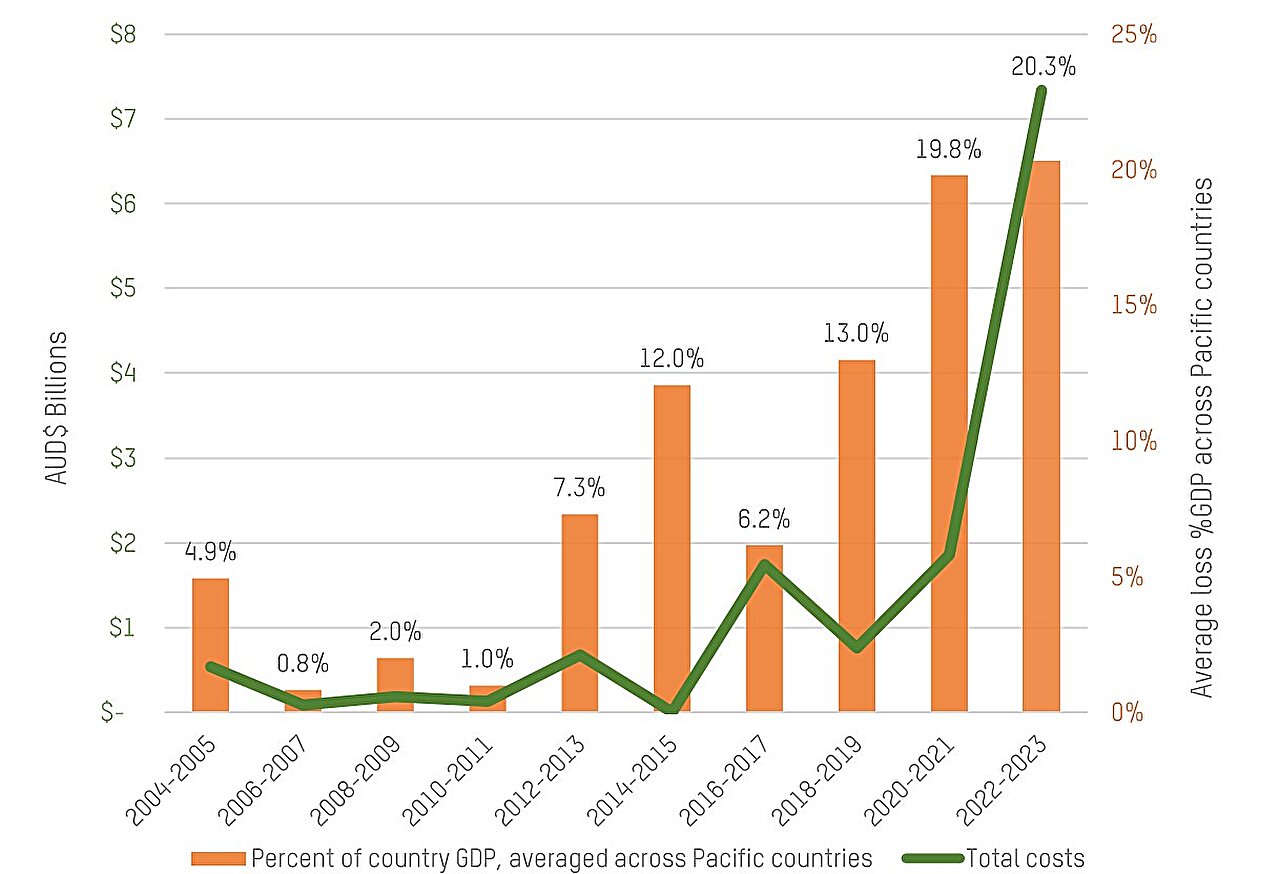Climate disasters are costing the Pacific eight times more than they did a decade ago
The number of people impacted by climate disasters in the Pacific increased 700% on average in the last decade, compared to the previous decade, according to new analysis by Oxfam Australia released as COP29 climate negotiations begin today in Baku.
Oxfam Australia reviewed the last 20 years of climate-induced disasters in the Pacific, uncovering data that shows the economic and human impacts of climate change have rapidly increased in the past decade. The new research highlights the need for funding for climate change loss and damage to be included in the new climate finance goal, the most significant agreement to be made this COP.
According to the analysis, in a region numbering 14 million, climate disasters have affected 6.9 million Pacific Islanders in the last 20 years, not accounting for individuals and households who are affected by multiple disasters.
Total costs from climate disasters have increased eight-fold in the last decade. In the last two years, costs reached a high of $7.3 billion.
The average GDP losses of Pacific countries are also increasing from decade to decade, with average yearly loss from climate disasters increasing four-fold—from 3.2% between 2004 to 2013, to 14.3% of GDP in the last decade.
In the case of Vanuatu, these losses reached 80% of country GDP, a devastating occurrence that happened twice for the island nation—in 2015 and 2020. For context, Australia’s costliest disaster in recent memory (The QLD-NSW floods of 2022) resulted in damages that were 0.4% of GDP.
Meanwhile, Australia’s current climate finance pledge for 2020–2025 is $3 billion out of Australia’s aid budget. When focusing on climate finance dedicated to the Pacific, the amount is even smaller. In 2022–23, when total disasters cost $7.3 billion, Australia committed just $265.9 million in climate finance to the Pacific.
Oxfam is calling on Minister Bowen, in his influential role of Ministerial Co-Chair of the New Collective Goal on Climate Finance negotiations, to advocate for Pacific priorities, particularly loss and damage being included, and find a pathway to support a strong goal that meets the needs of developing countries.
Oxfam in the Pacific’s Executive Director, Eunice Wotene calls for ambition from the Australian government to address the scale of climate damage in the Pacific.
“We recognize that the ambition from climate activists in the Pacific and around the world is for a climate finance goal that is in the trillions,” said Wotene.
“To the Australian government and many other western governments this might seem too ambitious—but if this research shows anything, it is that the scale of climate damage is beyond what we have imagined and getting worse by the day.
“Unless Australia acts decisively and commits the funds that are so urgently needed now, that number will only get bigger and the struggle for a climate-secure Pacific even harder to achieve. Now more than ever we need to work together recognizing the great ocean that we share and this region that we call our home,” she said.
Oxfam Australia Policy and Advocacy Lead, Josie Lee, says Australia’s climate finance remains far below the scale of need in the Pacific and well below our fair share.
“Australia’s climate finance commitments are grossly insufficient. This funding shortfall hinders Pacific Island and other countries from protecting and adapting their homes and agriculture to rising sea levels, and recovering properly after extreme cyclones destroy their villages,” said Lee.
“If Australia is to stand shoulder-to-shoulder with the Pacific at COP29, and indeed credibly partner with the Pacific to host COP31 in Australia in 2026, we must step up on the make-or-break issue at COP29—setting a new global climate finance goal for developing countries.
“Funding for recovery from the losses and damages caused by climate change must be included in the new global climate finance goal. Without adequate funding, Pacific and other low-income countries cannot protect their communities, rebuild after disasters, and adapt to the escalating impacts of climate change,” she said.
More information:
Report: www.oxfam.org.au/wp-content/up … _disasters_brief.pdf
Citation:
Report: Number of people impacted by climate disasters in the Pacific increased 700% in the last decade (2024, November 11)
retrieved 11 November 2024
from lmr
This document is subject to copyright. Apart from any fair dealing for the purpose of private study or research, no
part may be reproduced without the written permission. The content is provided for information purposes only.
